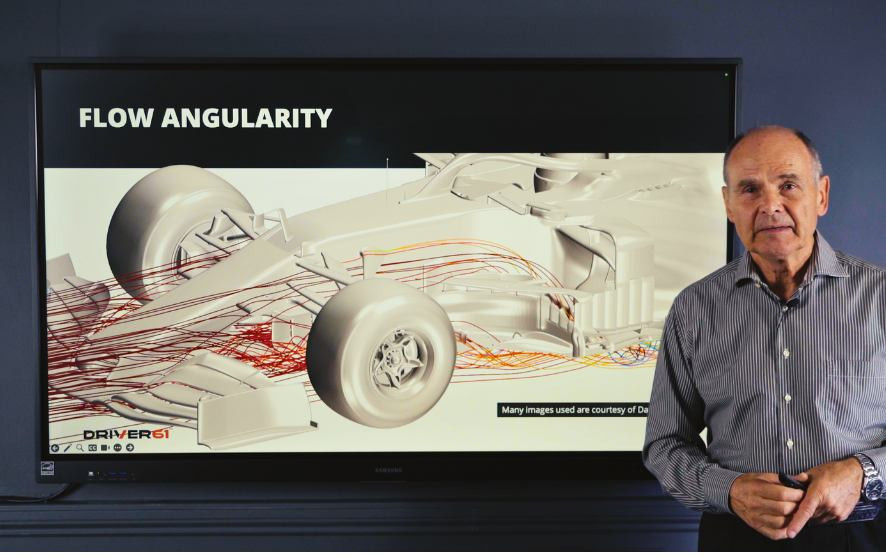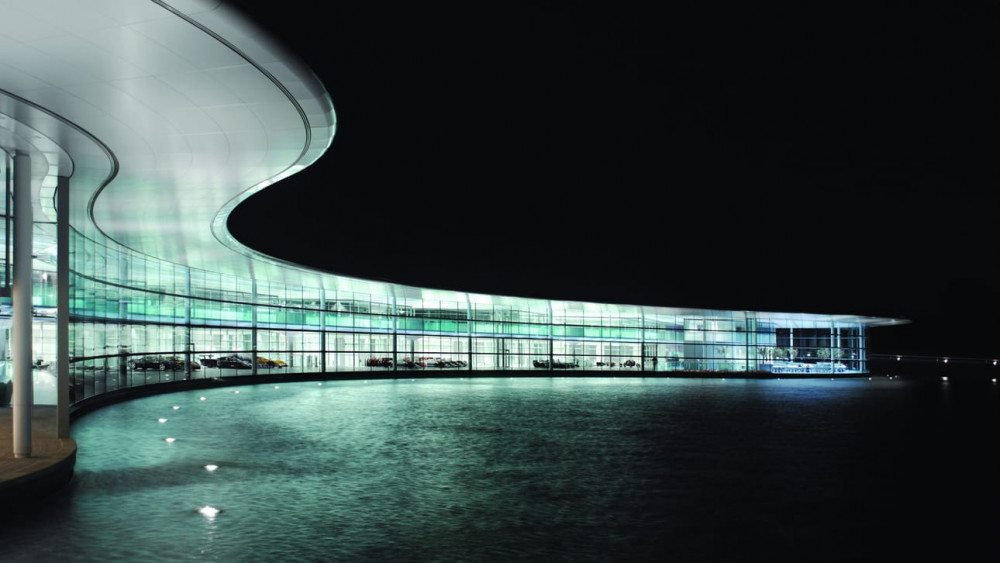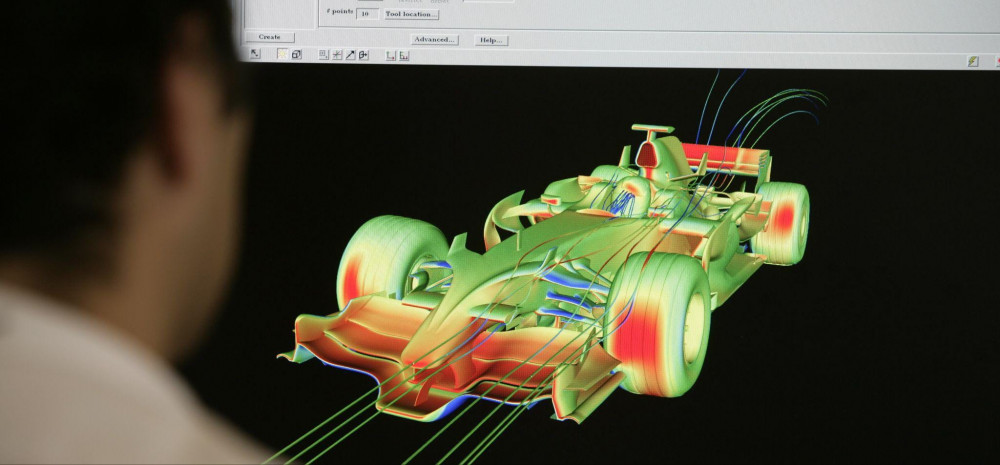"The fundamental point of all of this is that we are trying to reduce the losses that the following car would face," explains Nikolas Tombazis, the FIA's Head of Single Seater Technical Matters. This single sentence encapsulates the entire aerodynamic challenge in Formula 1 – and why the skills you develop in this field are so extraordinarily valuable.
Formula 1 aerodynamics represents the pinnacle of fluid dynamics engineering. Every microscopic surface change, every wing angle adjustment, and every airflow redirection can mean the difference between victory and defeat. Understanding how air moves around an F1 car isn't just fascinating science – it's the foundation of a career that could take you to the very top of motorsport engineering.
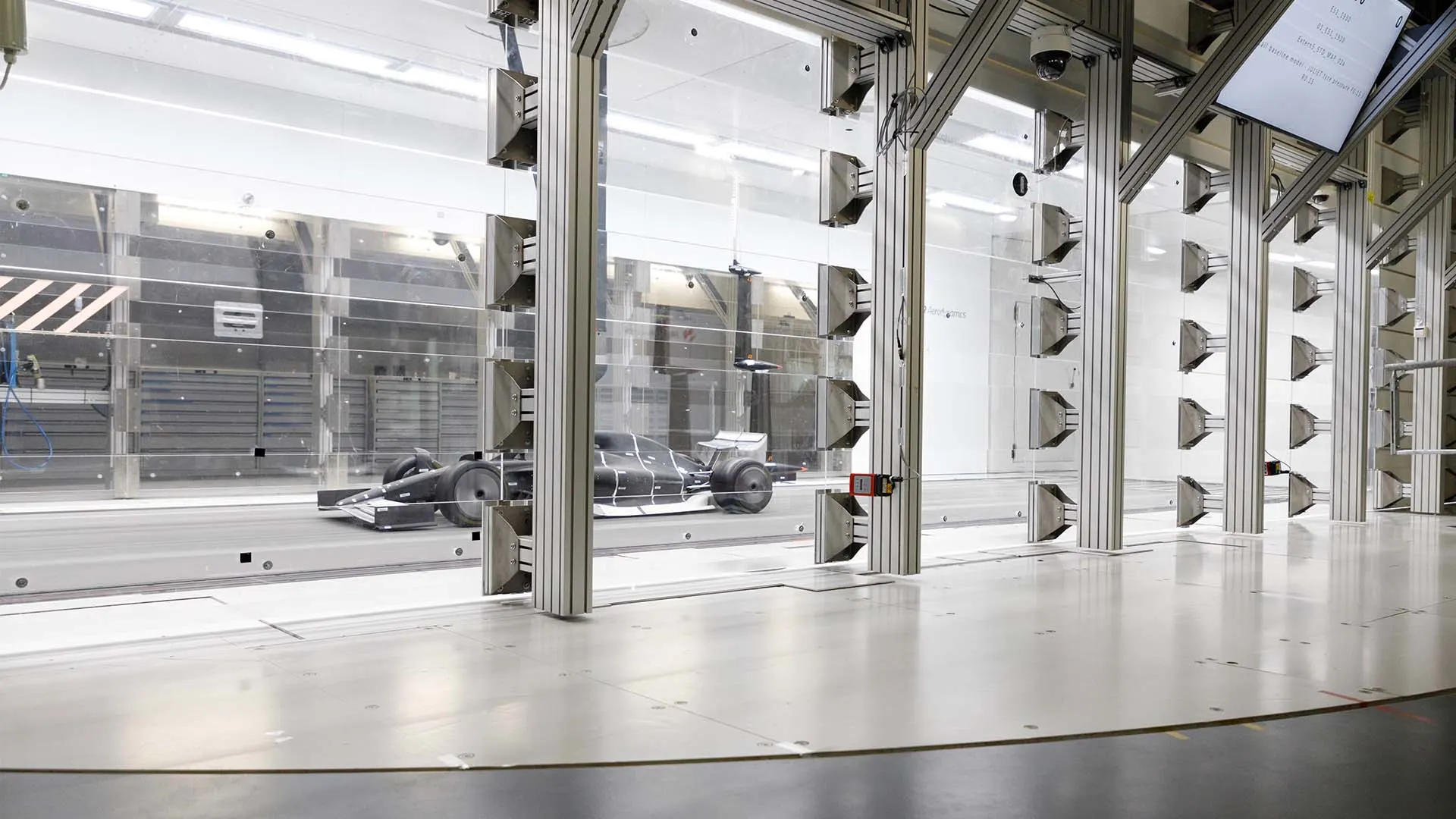
F1 aerodynamics development requires sophisticated wind tunnel testing and CFD simulation - Image: Formula 1
The Building Blocks of Aerodynamic Understanding
Before diving into the complex world of F1 aerodynamics, it's essential to understand the fundamentals. Air pressure forms the foundation of everything that happens around a racing car. Think of air as millions of tiny molecules flying about in space – pressure is essentially the "busyness" of these molecules in any given volume.
When you inflate a balloon, the air pressure inside keeps it inflated because particles are constantly colliding against the inner surface with force. The same principle applies to F1 cars, but instead of keeping something inflated, we're manipulating air pressure differences to create downforce.
How F1 Wings Generate Downforce
The rear wing of an F1 car forces air upwards, but according to Newton's third law – every action has an equal and opposite reaction – when the wing pushes air up, the air pushes the wing down. This downward force is what we call downforce, and it's really that simple in principle.
The wing profile creates two distinct airflow paths. Air flowing over the top follows the curved surface at a relatively leisurely pace, while air underneath gets squeezed into a much tighter space between the wing and the road. This creates what's called the venturi effect – forcing air through a smaller space makes it travel faster.
Faster-moving air has lower pressure, so you end up with low pressure under the wing and higher pressure above. The result? The car gets pushed downward into the track, providing the grip needed for those incredible cornering speeds.
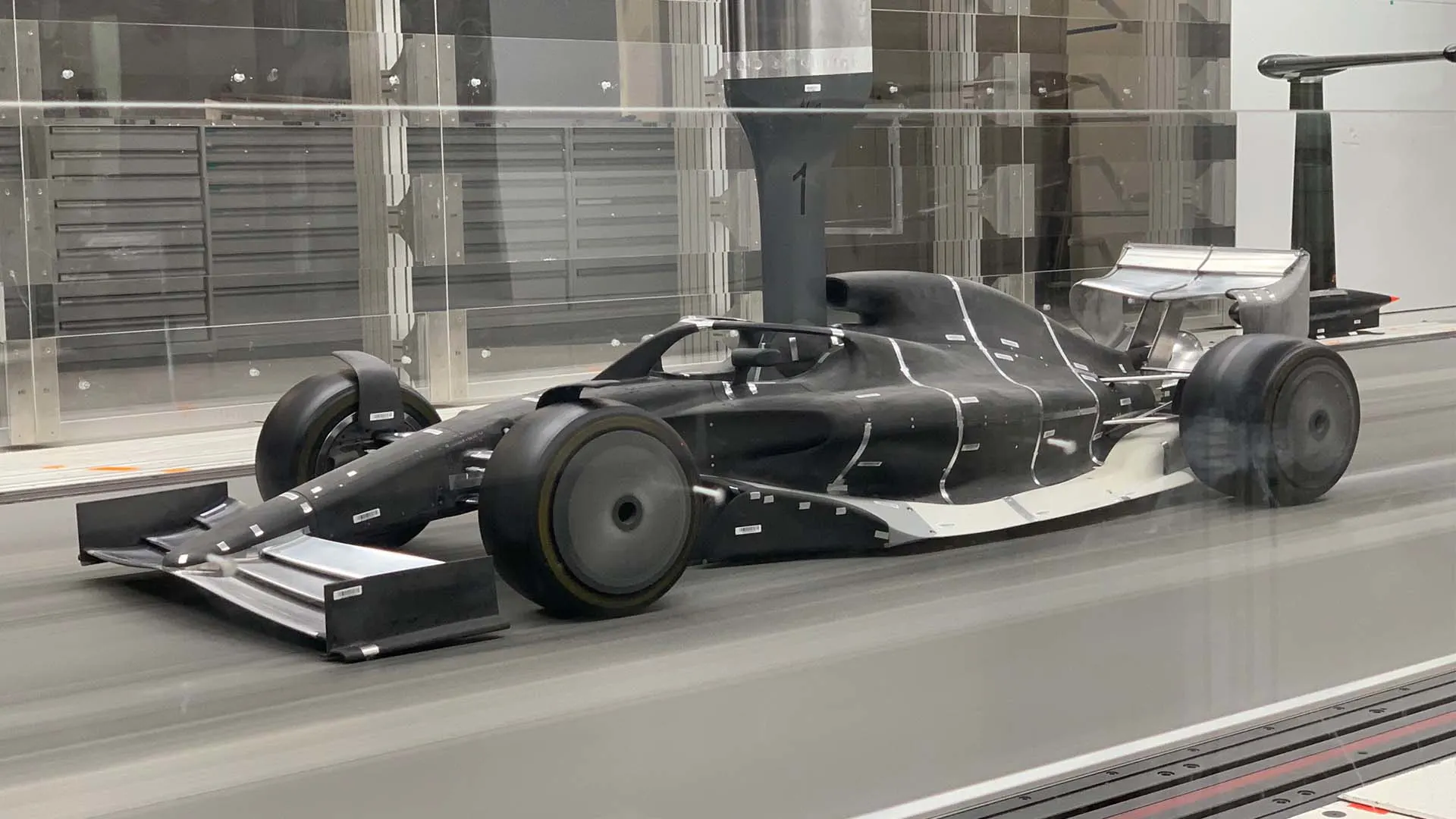
Modern F1 aerodynamics testing combines traditional wind tunnel work with advanced CFD simulation - Image: Formula 1
The Modern Aerodynamics Department
Today's F1 aerodynamics departments are technological marvels. Teams employ dozens of aerodynamicists, CFD engineers, wind tunnel technicians, and data analysts working around the clock. The sophistication is staggering – modern F1 CFD simulations can use over 550 million computational cells, compared to the 95 million that teams typically use.
As Pat Symonds, F1's Chief Technical Officer, explains: "In our current configuration, we're using 1152 cores and we're solving up to 550 million cells. And next year we have potential to move up to 2300 cores. We have more than an order of magnitude more of computer power that we're throwing at it than the teams might use."
The Integration of CFD and Wind Tunnel Testing
Despite advances in computational fluid dynamics, wind tunnel testing remains crucial. Modern teams use both methodologies in tandem – CFD for rapid iteration and concept development, wind tunnels for validation and correlation. The most successful teams excel at correlating their CFD predictions with real-world wind tunnel and track data.
Teams typically run 50% or 60% scale models in their wind tunnels, with some facilities capable of wind speeds up to 50 metres per second. The models are fitted with hundreds of pressure sensors, and sophisticated wake measurement systems using pitot tubes map the turbulent air behind the car.
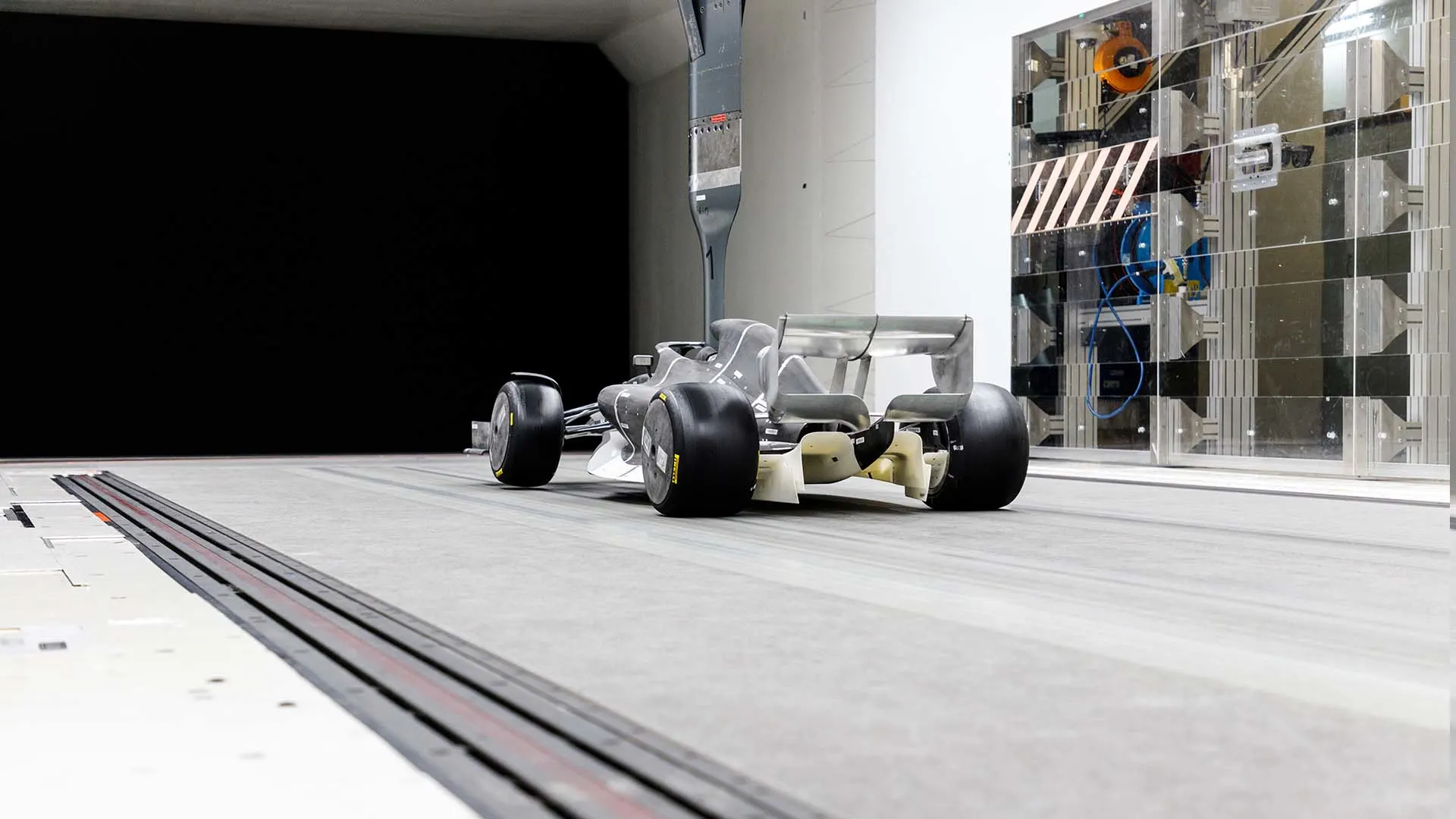
Advanced measurement systems in modern F1 wind tunnels capture detailed airflow data for aerodynamic development - Image: Formula 1
Essential Skills for F1 Aerodynamics Careers
Analysing current job postings from leading F1 teams reveals the skills modern aerodynamicists need. At the entry level, teams look for:
Educational Foundation
Most positions require a degree in Aerospace, Aeronautical, or Mechanical Engineering, with many specifying aerodynamics specialisation. Mathematics and Physics graduates are also welcomed, particularly for CFD methodology roles. Advanced degrees (MSc/PhD) are increasingly common, especially for CFD specialists.
Technical Competencies
CFD expertise is now fundamental. Teams expect proficiency in commercial CFD packages, with OpenFOAM experience highly valued. Understanding of turbulence modelling, mesh generation, and solver optimisation is essential. Programming skills in Python, C++, and Linux environments are increasingly important as teams automate their workflows.
Traditional aerodynamics knowledge remains crucial – understanding of pressure distributions, boundary layer behaviour, and flow separation. CAD skills for surface design and wind tunnel experience for experimental validation complete the technical requirements.
Modern Additions
Machine learning and artificial intelligence applications in CFD are emerging requirements. Data analysis capabilities, correlation techniques, and statistical methods are highly valued. Teams also seek engineers who can work effectively in collaborative environments, managing complex projects under intense time pressure.
Career Progression Paths
F1 aerodynamics careers typically follow several paths:
Aerodynamic Development Track
Starting as a Junior Aerodynamics Engineer, you'd progress through Aerodynamics Engineer to Senior Aerodynamics Engineer, potentially reaching Project Leader or Principal Aerodynamicist roles. This path focuses on car development, concept creation, and performance delivery.
CFD Specialist Route
Beginning as a CFD Engineer or Graduate CFD R&D Engineer, specialists can advance to CFD Methodology Engineer, Lead CFD Engineer, or Head of CFD. These roles concentrate on developing and improving computational tools and correlation techniques.
Interdisciplinary Opportunities
Modern F1 creates opportunities bridging aerodynamics with other disciplines – Aero Performance Engineers link trackside operations with development, while CFD Tools Engineers work with software teams to build custom applications.
Salary Expectations and Benefits
F1 aerodynamics roles command premium salaries. Graduate positions typically start around £35-45k, with experienced engineers earning £60-90k. Senior roles and team leadership positions can reach £100k+, with top aerodynamicists commanding significantly more.
Beyond salary, F1 teams offer exceptional benefits – private healthcare, generous pension contributions, on-site gyms, subsidised food, and the intangible benefit of working at motorsport's pinnacle. The learning opportunities and career development in such a demanding environment are unparalleled.
Breaking Into F1 Aerodynamics
Competition for F1 roles is intense, but several pathways exist:
Industrial Placements and Internships
Most major teams offer year-long industrial placements. These provide invaluable experience and often lead to graduate roles. Applications typically open in autumn for summer starts, with assessment centres in early November.
Graduate Programmes
Teams like McLaren, Williams, Mercedes, and Red Bull run structured graduate programmes. These combine rotations through different departments with targeted training and mentorship.
Skill Development
Building relevant skills outside F1 helps. Motorsport experience through university teams, CFD projects, or even personal aerodynamics experiments demonstrate passion and capability. Contributing to open-source CFD projects or publishing research can set applications apart.
The Future of F1 Aerodynamics
F1 aerodynamics continues evolving rapidly. Sustainability regulations are driving efficiency improvements, while cost caps are forcing innovation in development methodologies. Machine learning integration with CFD, advanced correlation techniques, and more sophisticated simulation approaches are reshaping the field.
The 2026 regulation changes will create unprecedented opportunities for aerodynamicists to innovate. New power unit regulations and potential active aerodynamics systems will require fresh thinking and novel approaches.
Taking the Next Step
Understanding F1 aerodynamics opens doors to one of engineering's most challenging and rewarding fields. Whether you're fascinated by the fundamental physics of airflow or excited by the technological challenge of finding that crucial tenth of a second, aerodynamics offers a career at the cutting edge of engineering excellence.
The journey from understanding how air pressure works to developing championship-winning aerodynamics is demanding but achievable. With the right combination of technical knowledge, practical skills, and determination, you could find yourself at the heart of F1's aerodynamic development – turning air into competitive advantage.
Ready to start your aerodynamics journey? Our comprehensive F1 aerodynamics course provides the theoretical foundation you need, while exploring current aerodynamics opportunities will show you exactly what skills teams are seeking right now.


